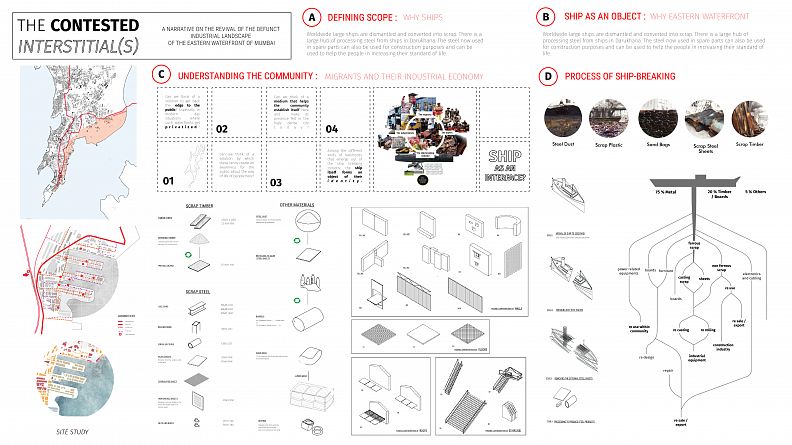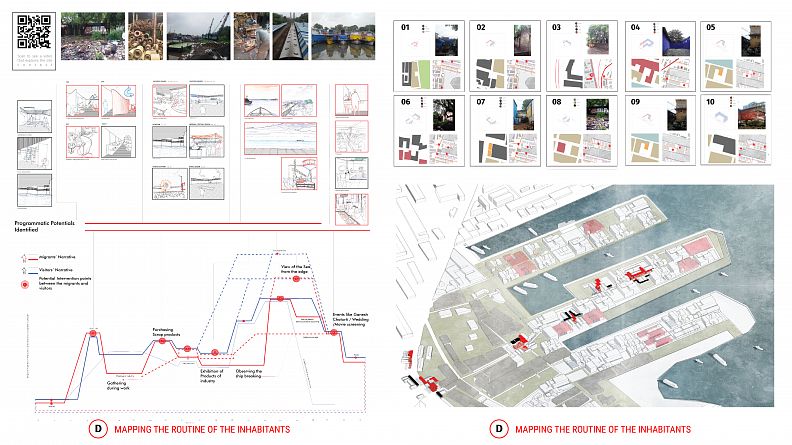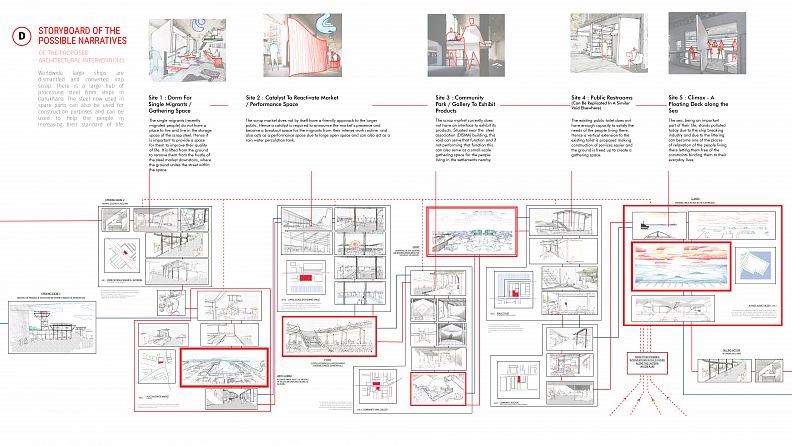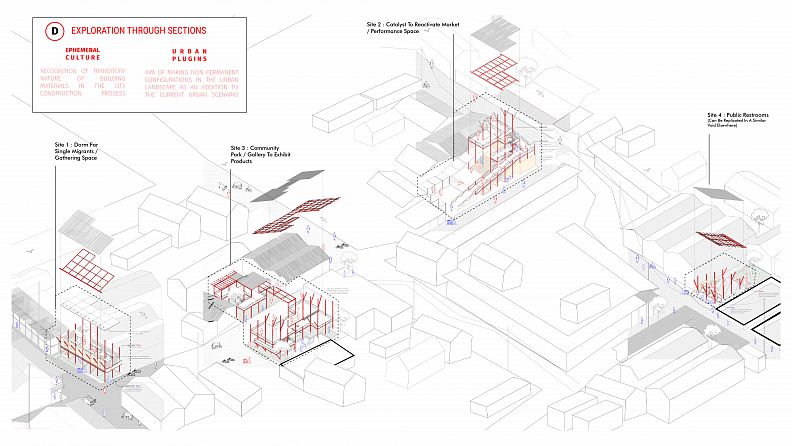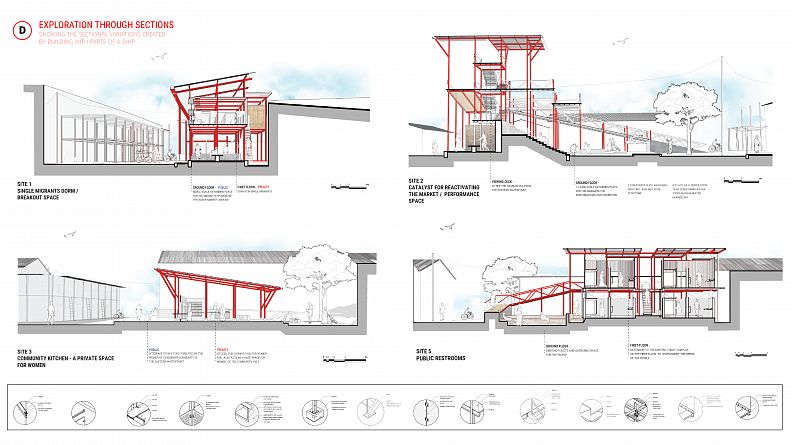The Contested Interstitial(s) - Reclaiming Lost Voids in A Contested public Domain

Project idea
Mumbai, the commercial and financial hub of the country has seen many changes in its history of over 200 years. The ports of Mumbai have played an integral role in the rise of the city and have also politically played an important role in the country. Because of its location, the Eastern Waterfront has typically served the city as a major economic driver through its shipping and manufacturing industries.
One such region along the Eastern Waterfront, which comprises 1/8 of the city's area, is the Darukhana region. Most of the people living in the Darukhana region of the Eastern Waterfront here are shipbreakers by occupation while others are white-collar workers who work in the commercial establishments in the Fort area nearby crossing the railroads.
The informal industries of scrap metal and shipbreaking continue to grow here in spite of being officially shifted to Navi Mumbai due to the geographical proximity to not only the industries in Mumbai but also to the domestic consumers of the small-scale steel products.
Hence the presence of migrants in the Eastern Waterfront is indispensable for the functioning of the industries to provide the steel required for the industries as well as provide much-needed labour for the commercial centre of Mumbai.
However, due to the shift in most of the Port related activities of the Eastern Waterfront to JnPT Harbour Terminal in Navi Mumbai due to which abandonment of certain pieces of land and relocation of some industries has occurred, has led to under-usage of resources here, further strengthens the need for the redevelopment of the Eastern Waterfront.
Considering the extreme shortage of built space in the city, this underutilized land (due to the abandoned industries) offers a great and historic opportunity to fulfil the ever-growing demand for public space in Mumbai. It would also give an impetus to the economy and provide the much needed social and recreational public amenities to the city and places to sell products who were neglected in the process of developing the waterfront.
In strengthening existing communities and neighbourhood structures, the project explores how the decrepit marine infrastructure can be reused to play an essential role in ensuring the future mental well-being of our urban lives.
The project attempts to reuse the ships as an Experimental Thought by rebuilding them with the current needs of the people and parts of the old ship in order to serve the future.
Thus, the intent is to evolve a potential methodology of reuse to develop the abandoned landscapes of industrial production within the city of Mumbai to empower the people of the region -the migrants of the ship breaking industry - at the same time also provide spaces for their own activities by utilizing the interstitial voids within the existing urban fabric of the Eastern Waterfront and the ships there and hence rejects the 'tabula rasa' nature of the development of the waterfronts for the cities of the Global South.
Project description
The programmatic requirements are evolved by analysis of the daily routine of the migrants through the narrative arc and dispersing the functions across the existing voids thereby evolving a system that allows for both daily life of migrants and the urban activity (as a result of the increased desire of recreation of the city dwellers) to coexist and prosper together without disturbing the existing context by using the interstitial voids already present.
Since the programmatic requirement for each void is different, the project aims to deconstruct the prevalent existing structural grid in each of the voids according to the public (includes the people, not from the region) / private (only for the migrants living there) nature of each void and uses the architectural elements present in the site to articulate such activities.
The revitalisation of the interstitial voids would be carried out by placing the nodes strategically in these voids. The first node and the last node play an important role in generating curiosity within the people and attract visitors. The other nodes would act as facilitators that enhance the experience of the people living there as well as serve the visitors.
This project undertakes seven such voids in a neighbourhood to demonstrate through seven architectural interventions and retrofitting social spaces within these voids.
The programs of these sites emerge through its immediate context while also serving to a greater narrative of the neighbourhood. These interventions serve as new anchor points in one's mental map and aid in building one's association to the place through increased instances of social interaction.
It addresses design problems through methods which allow for ease of construction by analysing the existing palette of materials in the site, creating larger open spaces and allowing for quick evacuation in cases of emergency.
The programs and the configuration of spaces are specific to their immediate context thus keeping the 'where' of the project relevant.
These so-called "nodes and landmarks" created are eventually leased to the migrants, to adapt into a multitude of purposes that would respond to the immediate context of each of the sites which would transform the waterfront into a sociable space for the larger public.
Thus, the project aims to reject the prevalent 'tabula rasa' nature of development and proposes an inclusive development of the waterfronts for the cities of the Global South.
Technical information
Master Plan, Techincal Drawings, Urban Axonometric, Storyboard
